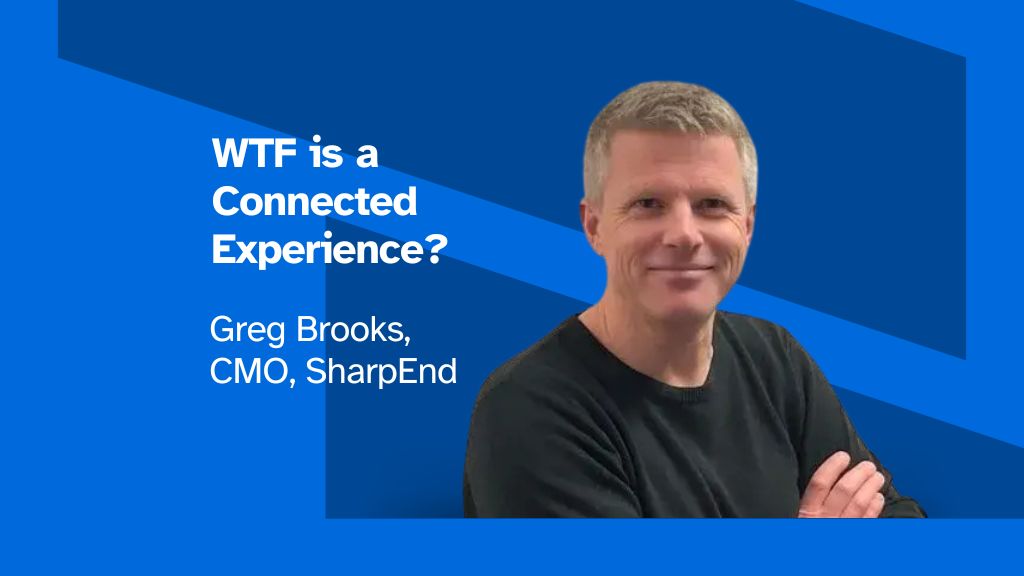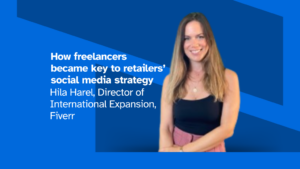By Greg Brooks, CMO of SharpEnd
I am often asked how brands can capture attention and engage with customers when they are exposed to hundreds of ads daily through conventional channels. With UK consumers being hit with between 50 and 400 ads a day, and our attention spans getting shorter, there needs to be a way in which brands can stand out against the noise. Connected experiences, a blend of technology and creativity that goes beyond traditional advertising methods, are my answer. But what essentially is a connected experience, and why is it becoming such a powerful tool for brands?
The basics
At its core, a connected experience acts as a bridge between the ‘physical’ and the ‘digital’. Using technologies like QR codes and NFC tags, they create direct interactions between a brand and its customers. When a customer scans a QR code on a beer mat or taps an NFC-enabled package for example, they unlock a personalised journey that goes beyond the shelf.
Think of the journey for a regular bottle of wine – buy it, drink it, discard it. Nothing more. With connected experiences, customers can use their smartphone to scan a label to discover the story behind the vineyard and gain access to tailored recipe recommendations or exclusive promotions – similar to our work with Rabble Wines. Only this technology can transform the ‘everyday’ products into interactive platforms, delivering an experience that builds on a brand’s post-purchase presence.
You might ask, why does this matter? In a world where customers are overwhelmed with bland, generic ads, a connected experience offers something that is personal and unique. It’s one of the only situations where a customer is actively asking a brand to give them attention, rather than the brand begging for an interaction. With connected packaging, the product itself becomes an interactive media channel, opening up new opportunities for brands to tell their story, gather data insights and build a deeper connection with their customers. Using the right technology, businesses can drive dynamic content based on the time of day, location, and even the weather for that specific user – all whilst collecting first-party data that was previously unreachable.
The value of post-purchase data collection lies in the fact that most brands have to conduct commissioned research for such information on their consumers. Through this, brands can uncover insights about how and where a product is being used and for how long – vital data for investments in CDP and CRM.
More than just another marketing channel
A frequent misconception is that connected experiences are just another channel alongside more traditional options like email and paid media. But a connected experience is much more than that. It creates your very own new media channel, one of which you have complete control, and is used by consumers actively seeking out your brand. This gives you a wealth of unique options beyond the usual marketing strategy.
Take Just For Men for example. The brand has a strong reputation – it’s iconic for most men but wasn’t resonating with a younger, modern audience. Using connected packaging, Just For Men was transformed into more than just a product, it became a tool that empowers their customers. By scanning packaging, users can access tailored grooming tips, product tutorials, and an interactive product selector showing specific facial hair options on themselves, delivering a personalised experience that speaks directly to the individual’s needs.
Similarly, Madri Exceptional tapped into the power of connected experiences to deepen customer engagement. An NFC-enabled campaign invited users to interact with the Madri brand in a creative way whilst generating existing customer loyalty. By scanning the packaging, beer enthusiasts unlocked a digital hub that provided not only a history of the brand but also recipes, music playlists, and exclusive content that enhanced their overall drinking experience.
Connected experiences transform how customers perceive and interact with a brand. Rather than just providing a product, these brands offer an ongoing dialogue. One that builds loyalty, generates valuable insights and drives repeat engagement.
Why Connected Experiences are here to stay
So, why are brands increasingly turning to connected experiences as part of their marketing strategy? The answer lies in the business benefits. Our Connected Experience Report showed that 55% of consumers are more likely to buy a connected product that introduces them to a new product experience.
Aside from generating buzz among consumers, with 86% of consumers agreeing that NFC technology is exciting, connected experiences also create a direct line of communication between the brand and the consumer. By offering customers tailored content, advice, or even rewards, brands can foster a deeper connection that encourages repeat purchases and long-term loyalty.
Serving as a valuable data collection tool (one of the top three drivers from a brand perspective), each time a customer interacts with a connected product, brands can gather unique insights. With consumer behaviour, preferences, and engagement patterns handed to brands on a silver platter, connected experiences can serve as a cost-effective solution, as well as aid in the creation of more targeted and creative campaigns.
In a nutshell
That’s what a connected experience is. It turns physical products into digital touchpoints, making your packaging and promotional materials a media channel in their own right. Connected experiences can achieve broader business objectives this way, like driving sales, increasing brand awareness, and improving customer retention.
As the digital and physical worlds continue to merge, connected experiences represent a shift from traditional, one-way advertising to interactive, personalised experiences that bring you closer to the customer. At SharpEnd, we believe that connected packaging is not just the future of advertising – it’s the present. Providing opportunities for brands to think creatively and connect more deeply, this solution allows brands to stay ahead of the curve.









